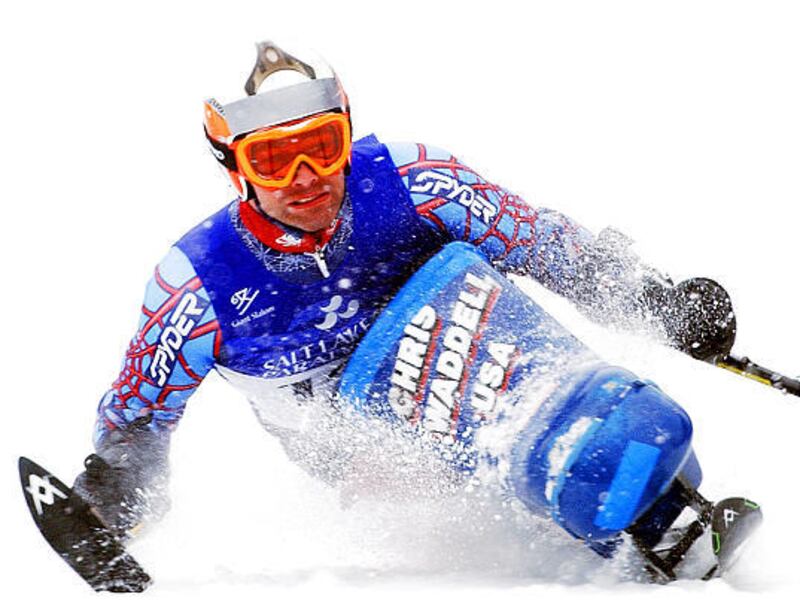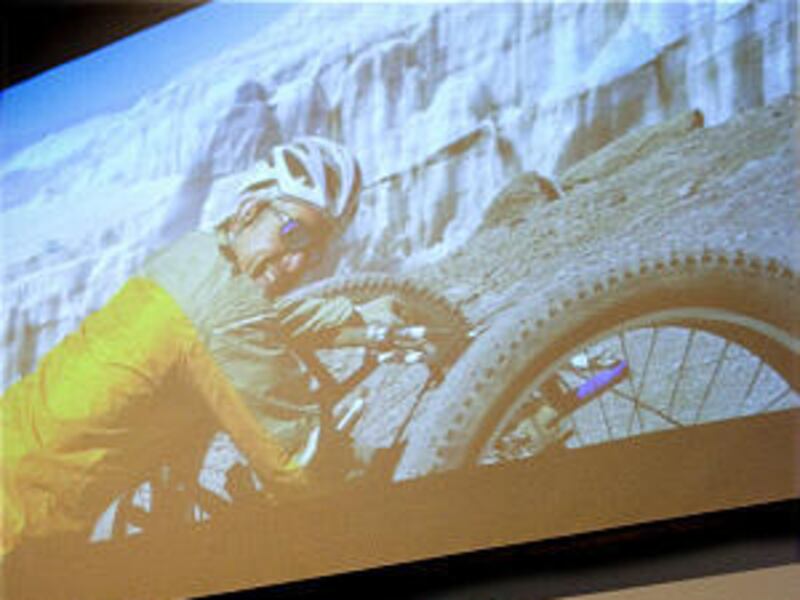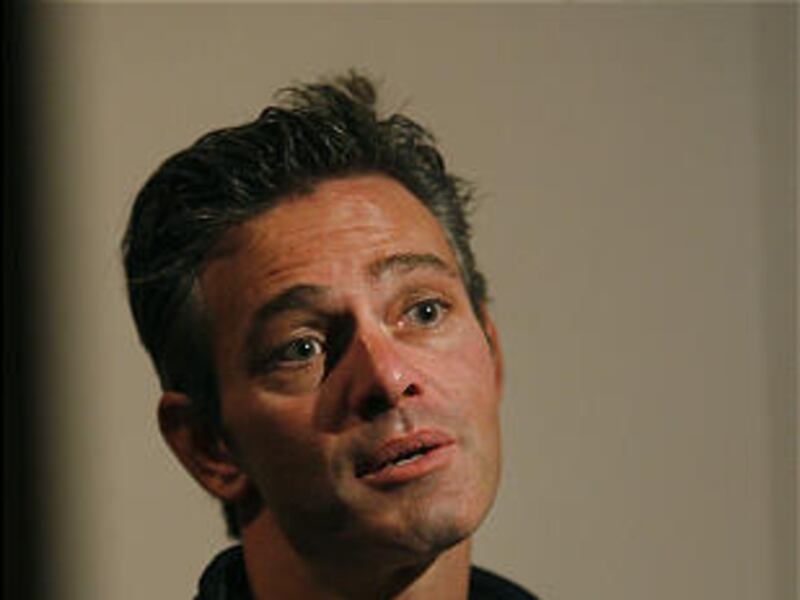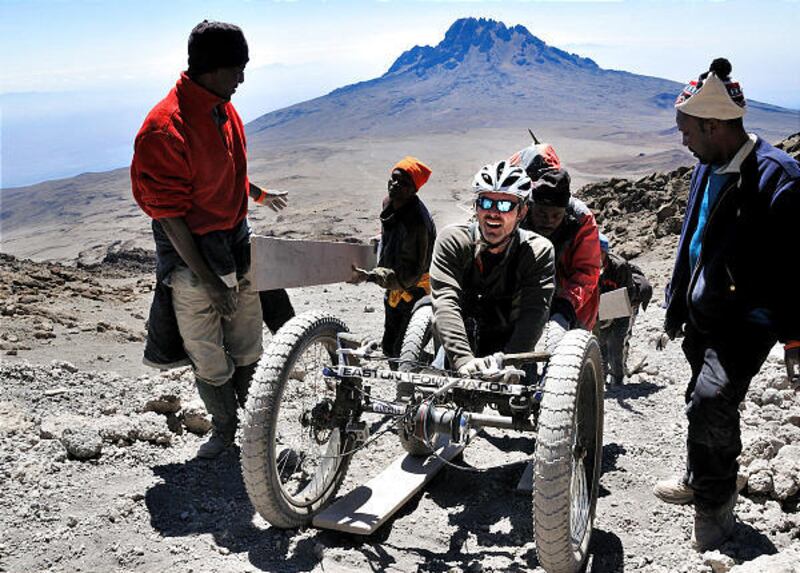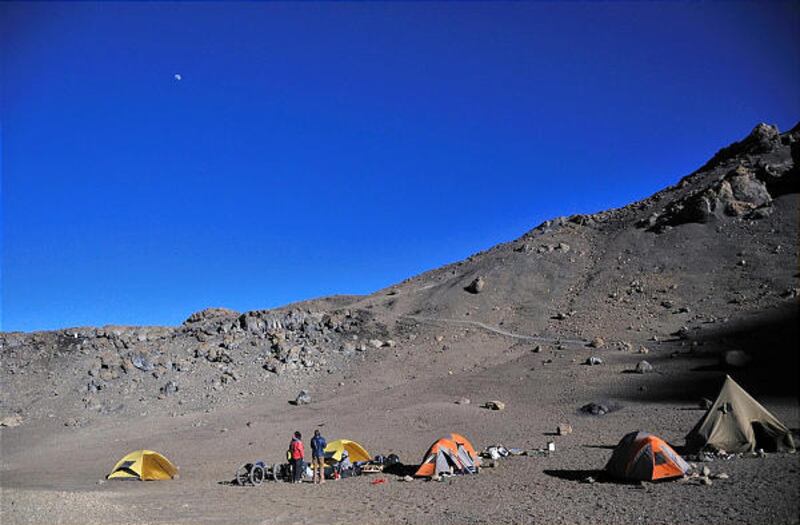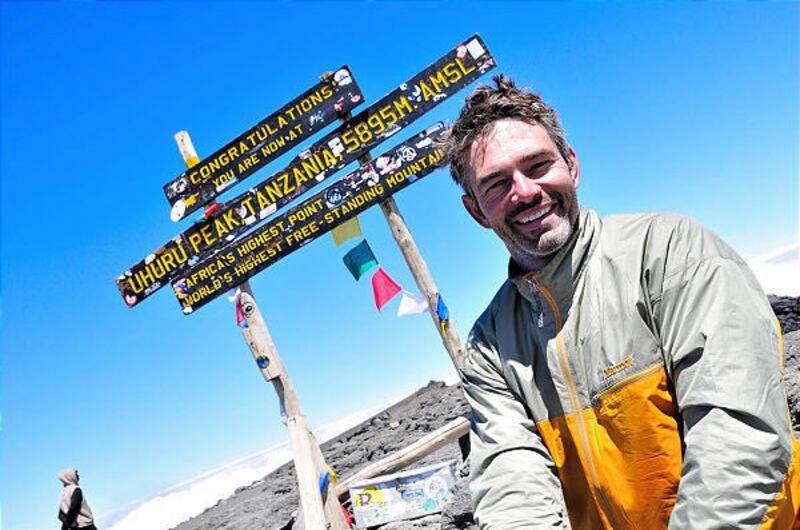As his support crew was making itself busy pitching tents, preparing dinner and setting up camp on the side of Mount Kilimanjaro, Chris Waddell was grinding away on his custom-made, four-wheel mountain bike just a few meters down the slope.
That distance might have been close enough to share a conversation with those milling about the campsite, but for Waddell, the distance was agonizingly far away.
"I was so physically exhausted, and my forward movement was so minimal," Waddell said, describing the painful journey he endured through the scree fields of loose, shalelike rock. "I'm 10, 20 feet away from the end of the day, and I literally can't get there."
But he did get there — and beyond.
Waddell's journey to the top of Kilimanjaro — a summit of 19,331 feet and the tallest free-standing
mountain in the world — was one no person like him had ever done before. A paraplegic since a tragic skiing accident in 1988, Waddell is the first person to summit the mountain in a handcycle.
And with each torturous rotation of the crank, Waddell moved a few inches closer to the peak while also blazing a trail, he hopes, for disabled people around the world who might enjoy an hour or two on the trails or beside a stream.
"There were a lot of people who looked at us and said 'What are you thinking?' " Waddell said. "But I wasn't doing this just for me. I think there was something more to it."
A 12-time Paralympic medalist in a variety of skiing races, Waddell said his trip to the top of Kilimanjaro — and the bike he made it on — was about proving an injury like his is not the end of a person's participation in outdoor recreation.
"Sports, as a disabled person, is a great way to break down barriers," he said. "It forces people to rethink what being disabled is."
For Waddell, a Massachusetts native, losing the use of his legs was obviously a life-changing moment. But it was not a life-ending one.
After reteaching himself to work the slopes on a monoski, he became one of the world's best at it. But he knew there was more.
When not being lifted up the mountain, he was limited in his mobility by his wheelchair. Waddell could zoom down paved roads and sidewalks to his heart's content.
But hiking the trails around Park City, the town he has called home for the last 10 years, was out of reach — almost like the campsites 20 feet ahead on the Kilimanjaro scree fields.
Waddell believes the bike he used to ascend the famous mountain might be what many are looking for.
"There aren't that many people who want to do what I've just done," Waddell said, "and with good reason. But there are a lot of people who want to go out and go for a hike with their family."
The bike, named Kubwa Bomba — or Huge Cool in Swahili — looks kind of like a four-wheeled sled on steroids. It is the Monster Truck of handcycles.
The frame is custom made and has thick, knobby 29-inch tires designed to dig into the loose sediment lining the slope of Kilimanjaro. It came with a flexible chest pad connected to the steering mechanism so — almost as if on a Segway scooter — he could turn left or right just by shifting his body weight.
When the going was too tough or the obstacles too formidable, he could have his support crew place boards in front of his wheels so he could climb over the giant roots of trees at the lower elevations and small boulders up high.
And with the winch attachment, he could plant the ends of a rope into the scree fields and slowly drag — not roll — himself up the most steep and slippery portions of the mountain.
At no point was he pushed or pulled. While his crew might have held him when he started to slip, any forward motion was a result of the energy and torque created by his arms.
The climb took days longer than it would for a "normal" person.
But at no time did he feel like throwing in the towel and taking an easy roll to the bottom. Once, when his crew was setting up camp and he was still churning away on the mountainside, he was offered the chance to stop there and have the camp move to him.
"That was absolutely the last thing I wanted," he said, explaining the mental and physical fatigue was never ending. "So I picked up the pace and finished in the cold … the terrain was the biggest challenge."
It's that terrain — though perhaps not as harsh as the one found in Kilimanjaro — he hopes to see become less challenging.
His custom rig, the Bomba, could be downsized a bit and produced in larger numbers.
That, Waddell said, could be a lifeline to otherwise restricted people hoping to escape what is a largely urban existence.
"I'd love to see it with some of the (wounded) veterans that come back," he said. "They can go hunt and fish and hike with their families."
Few will ever climb Mount Kilimanjaro the way Waddell did.
But if the Kubwa Bomba ever becomes available to anyone who wants one, perhaps a few fishing lines will be tossed or a few trips along the Wasatch Crest trail enjoyed.
And that, Waddell said, would indeed be Huge Cool.
e-mail: jeborn@desnews.com


